It was a 20-dollar/20-minute taxi ride from my hotel in El Cangrejo, Panama City, to the Miraflores locks of the Panama Canal. We drove by the port of Balboa and passed scores of cranes loading and unloading thousands of Danish shipping containers onto and off of Chinese freighters. Then dozens of white three-story buildings with red-orange roofs appeared on the right, military-style residences from another era. “The Americans lived there,” my driver remarked.
At my destination, I walked up three flights of stairs to the visitors center, bought a ticket, sat through a 15 minute film about the canal, and went wandering through the four story building. The center integrated a museum and a series of observation platforms directly opposite the locks. As I climbed upward, I got different perspectives on the canal.
From the top level, the size and scale of the canal became apparent. The enormous doors of the locks (made in Pennsylvania, by the way) hold back tons of water that fills the deep canal. There is a cog railroad track on either side of the canal. The engines that ride on it (which are called mulas, or mules) pull the ships through the channel. Since the water level in the locks rises and falls, the tracks also run up steep concrete inclines so they stay more or less level with the ships.
To my left was a channel that, in just a few kilometers, empties into Panama Bay and the Pacific Ocean.
To my right was the bulk of the canal system, 65 kilometers of lakes, canals, and locks that end in the city of Colón and the Caribbean Sea.
Behind the visitors center, I could see some of the infrastructure that keeps the canal running. This, I believe, is the power plant.
Inside the museum, I was especially interested in a working replica of part of the control room. I got the notion that if I pushed the right button, I could snarl international commerce for months.
The museum had many beautifully-wrought models of the early 20th century machinery that was used to build the canal. And it did a good job of conveying how monumental a task it was. Building the canal employed tens of thousands of men from Panama, the United States, the Caribbean islands, and China. A whole city had to be erected to house all the workers. Because disease and tropical conditions posed such a threat to the workforce, their housing was built with window screens, sanitary sewers, oiled cisterns to keep down mosquitoes, and other features that were not common to work camps of the era. But even with these refinements, the death toll from sickness alone was staggering.
Throughout the visitor center, I saw variations of this graphic. This particular one indicates the stairs, but others mark bathrooms and exits. All of them use the broken rectangle as the primary design element, representing the path between the seas.
I was thinking: we built this. We human beings built this huge, glorious thing. And we did it without modern tools and technology. And just as I was starting to convince myself that nothing could be more sublime, this bird showed up, alighted on the fence that ran beside the great canal, and proved me wrong.
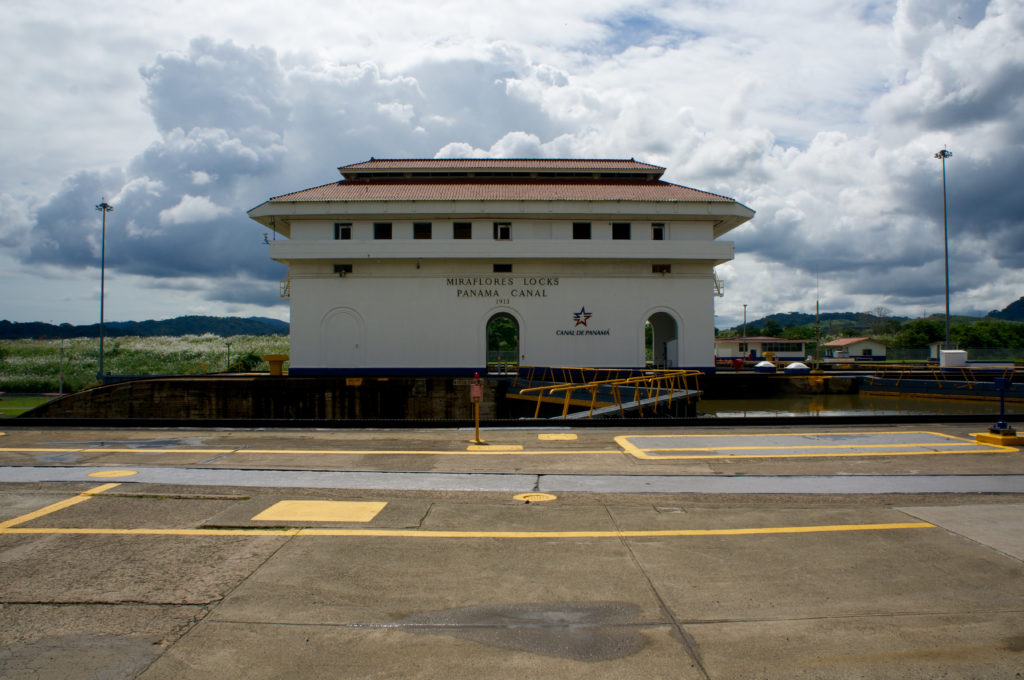
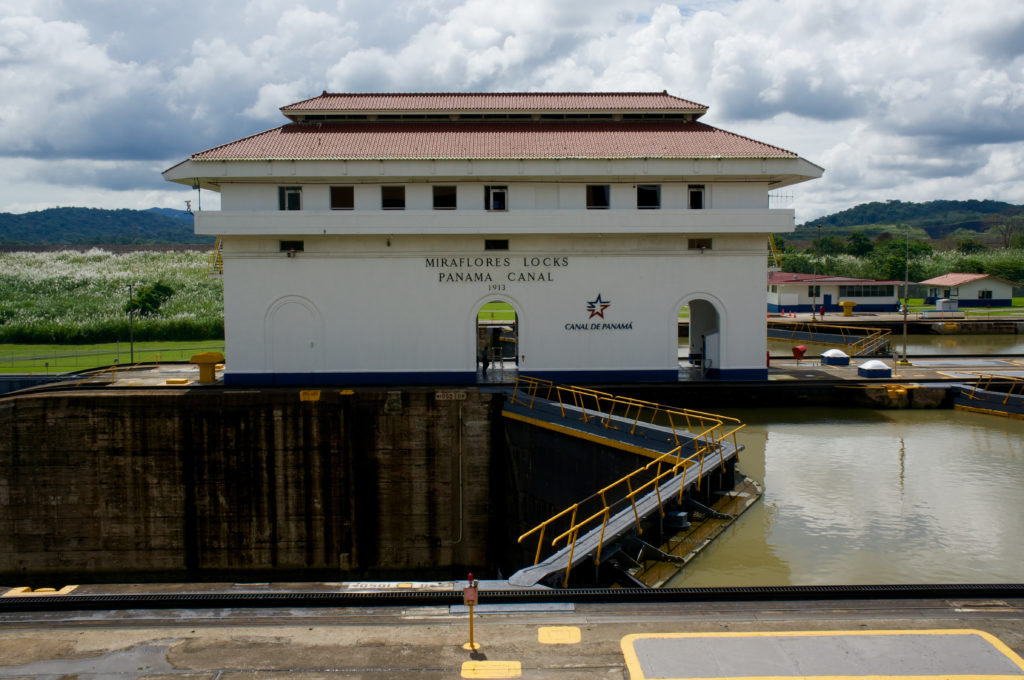
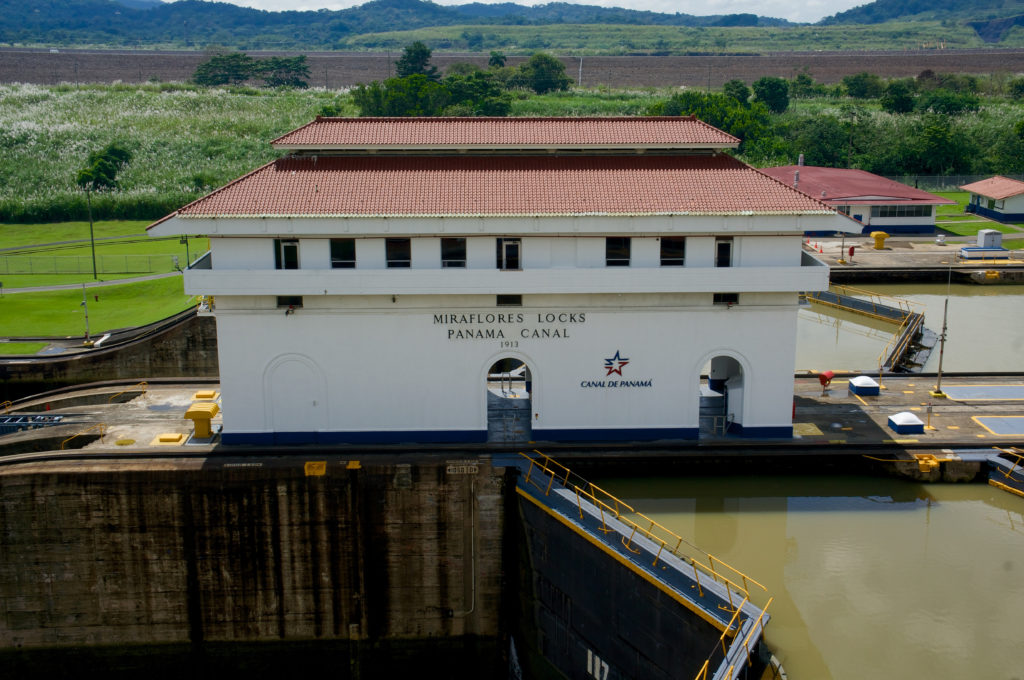
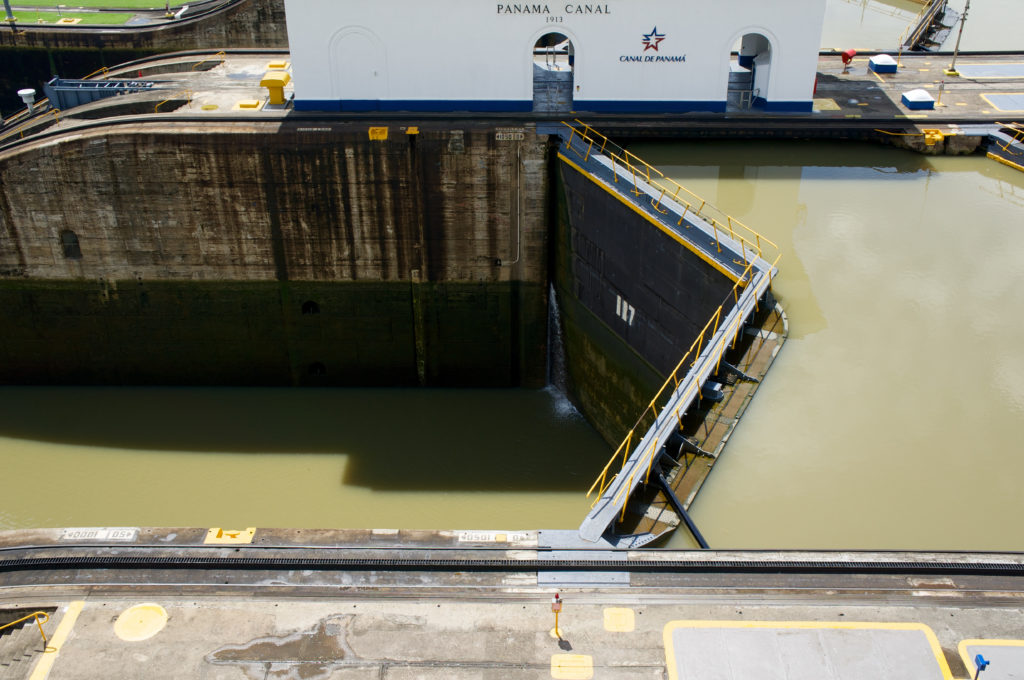
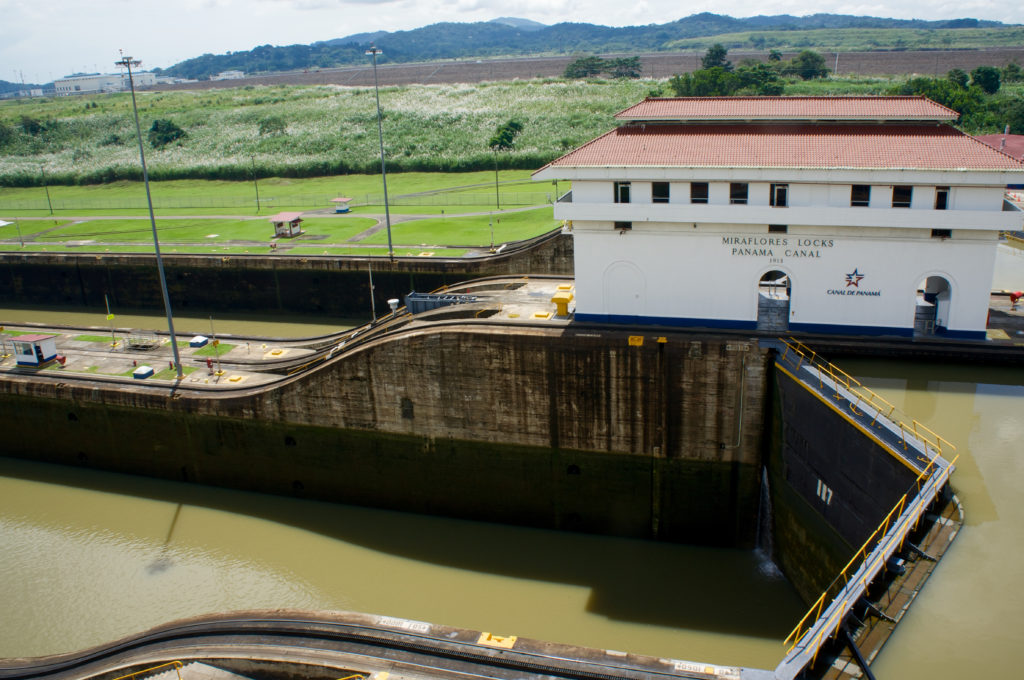


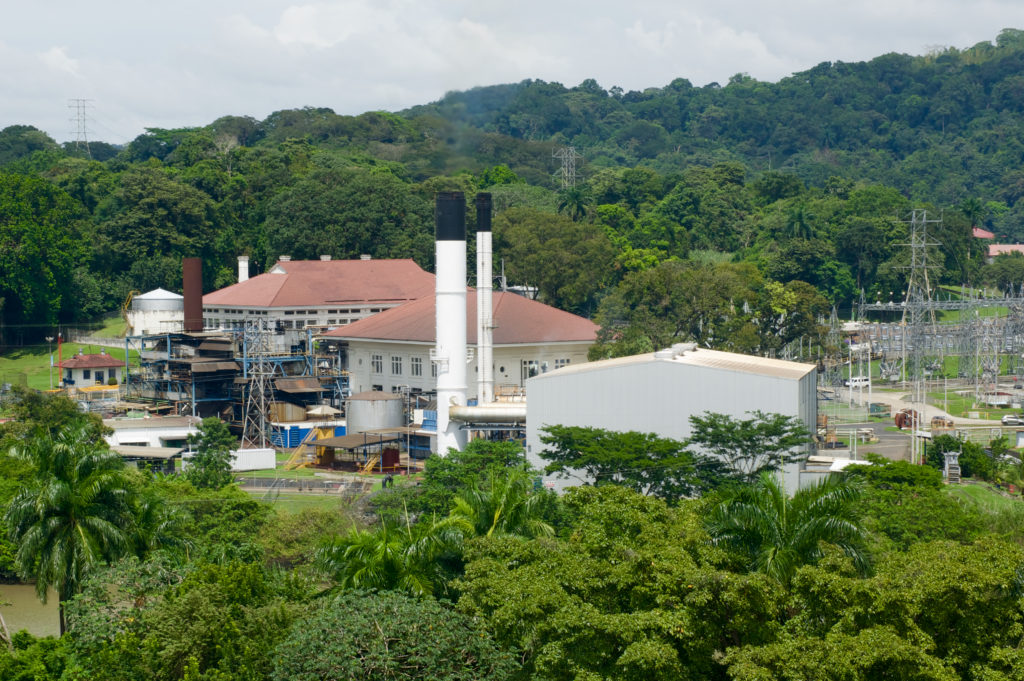
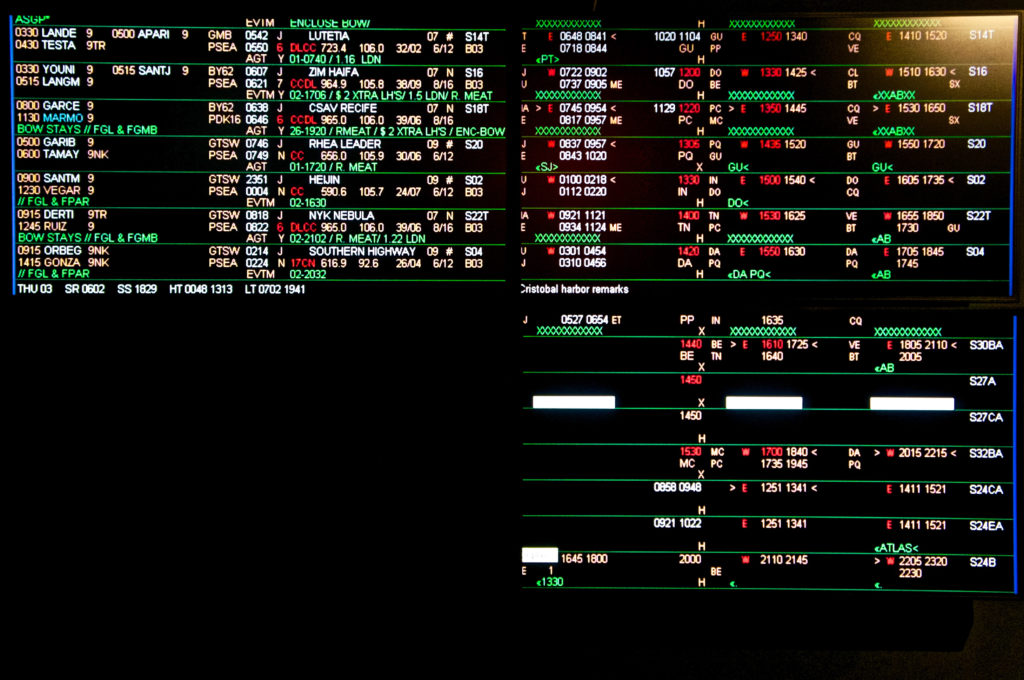
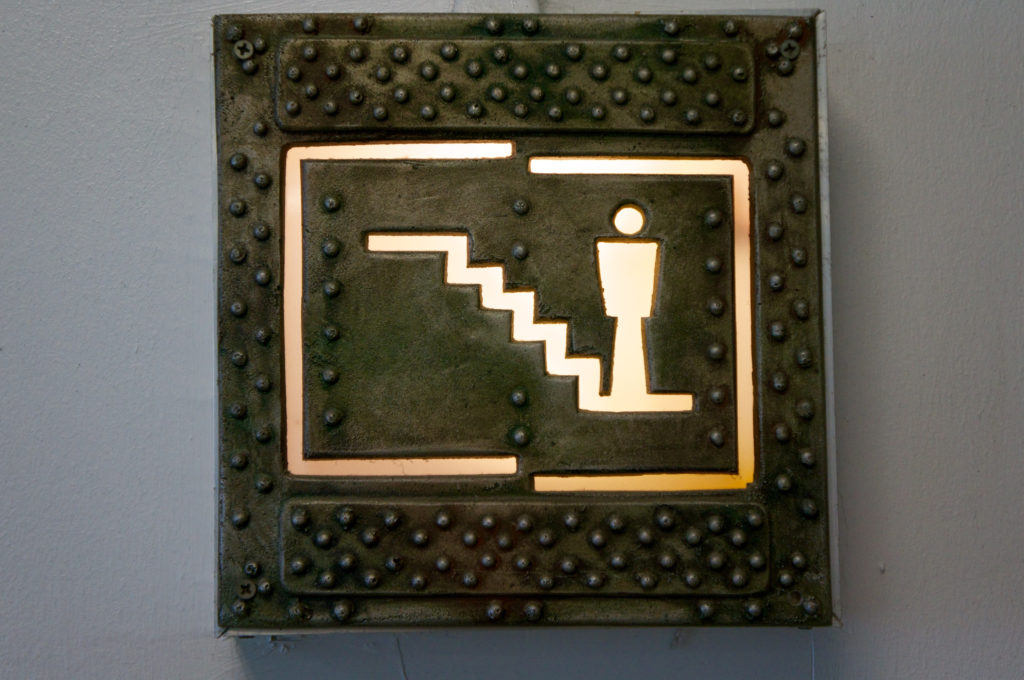
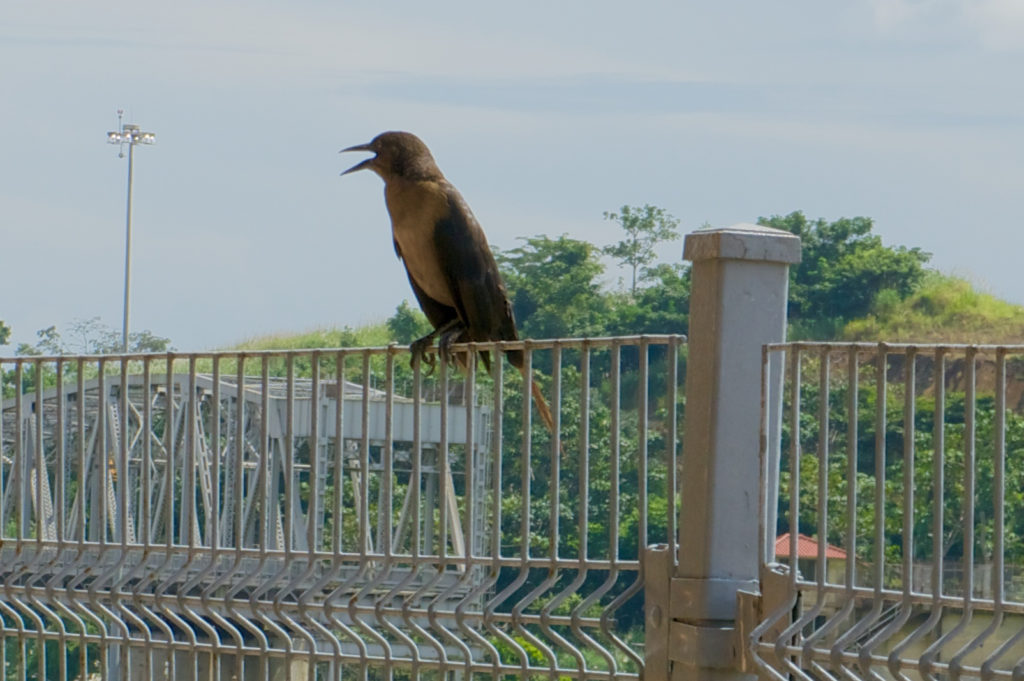
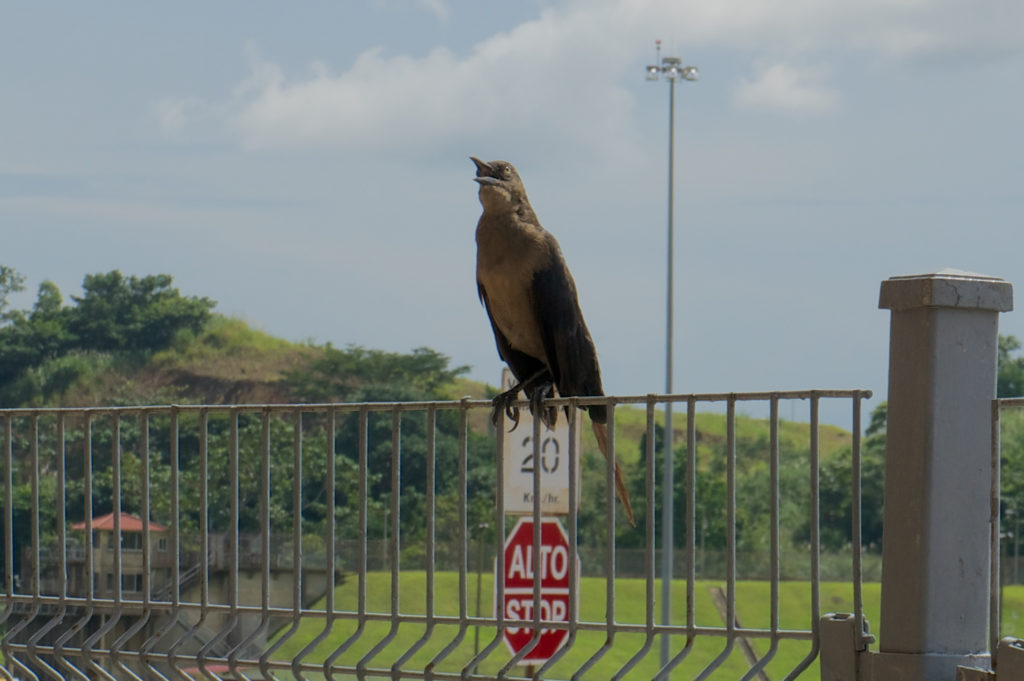


































Speak Your Mind